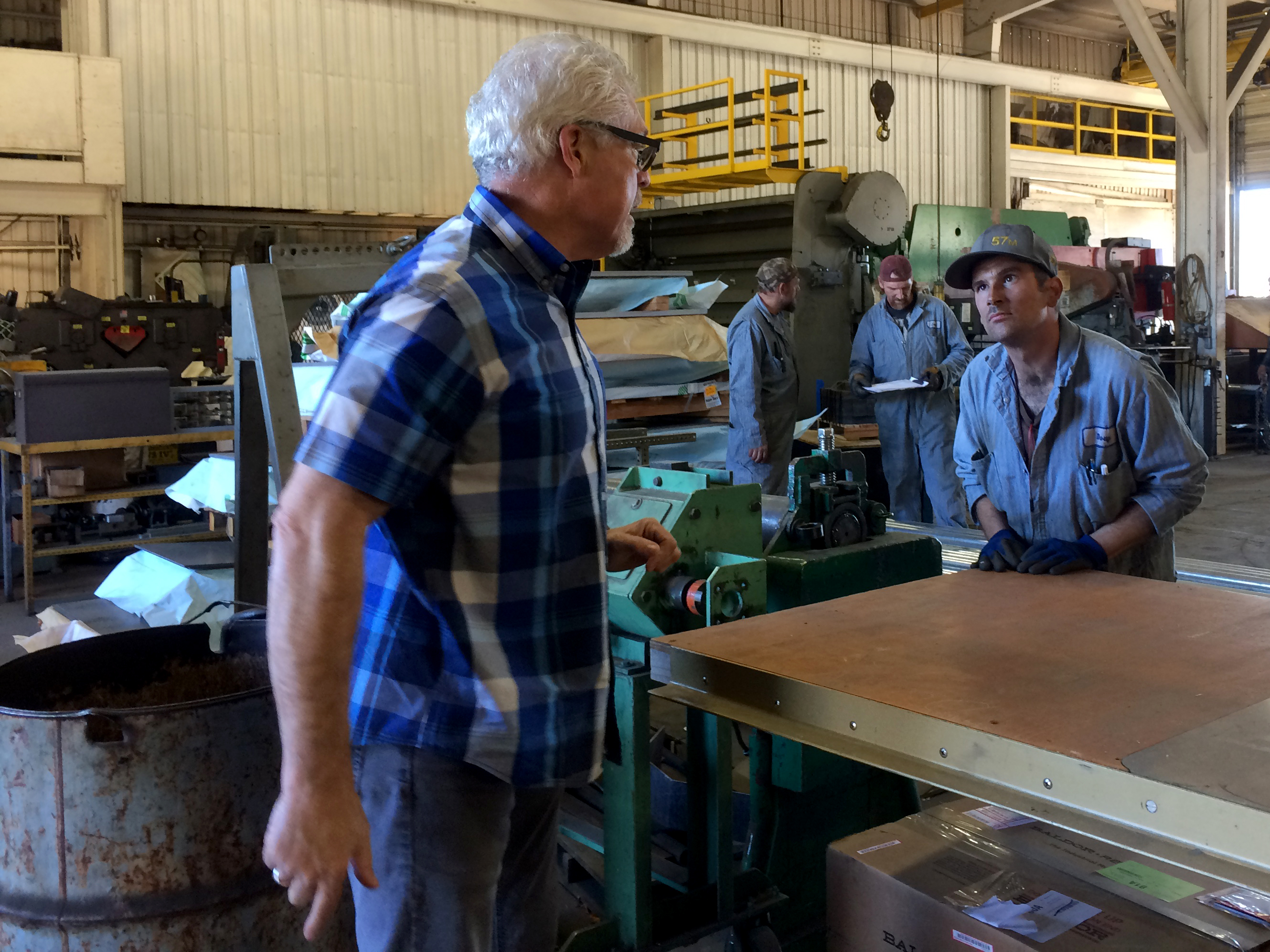Career Connected Learning is all about partnerships
School district, industry partnerships key to connecting students with jobs
* This is Part 1 of a two-part series looking at how Douglas County schools and industry leaders are working together to guide students toward successful careers in manufacturing. Look for Part II in the November edition of Partners’ Post.
It’s a simple concept: Local high school graduates need jobs, and local trade shops need employees. It’s a win-win when students and industry come together. But there is a lot of work going on behind the scenes to make those connections happen.
Schools all over Douglas County are working to offer opportunities for students interested in careers in manufacturing, construction, agriculture and many other fields. The trades can offer good wages and don’t necessarily require four-year college degrees. Local industry leaders are also partnering with school districts to help out in a variety of ways.
With National Manufacturing Day falling in the month of October, Douglas County Partners for Student Success took a look at some of the partnerships that exist locally in the field.
Jack Trowbridge, owner of Great Northern Trailer Works in Sutherlin, said that an emphasis grew over the years on students earning a degree in college, with fewer and fewer of them choosing to enter the trades.
“Metal fabrication, plumbing, electrical, contractors – all of us are scrambling trying to find kids who are able to handle the type of work that we’re in,” said Trowbridge, who also owns North Star Fabrication.
Parents, communities and schools are now seeking a balance that will continue to serve university-bound students while better supporting those interested in skilled labor careers. That has meant a ramp-up in the past couple of years of career and technical education programs. Financial support has come from the state, Measure 98 and other sources such as the Perkins Grant.
Much of the funding has been used to upgrade equipment in classrooms.
“In manufacturing, the equipment, has changed dramatically,” said Roseburg High School teacher Sheri Carson, who is the school’s career and technical education division leader. “And with the money that was given in grants from the state, that’s been able to help us get equipment that industry is actually using. Some of the equipment that we had in the welding room before was from World War II. It was still good stuff, it worked, the kids could be taught how to use it, but that’s not what we’re using in industry.”
At RHS this year, over 400 students are part of the manufacturing program that includes welding, woods and drafting. Students gain practical experience through school and community projects and working with industry partners like Great Northern Trailers, Fabform Industries, Knife River Materials and local engineering firms. Programs offer the chance to earn college credits as well as skills necessary to enter the workforce after graduation.
Grant funding allowed Roseburg High School to purchase a $50,000 Haas end-mill used for machining, along with other major equipment. Students who learn to use the machine can potentially go directly into manufacturing businesses using the same or similar equipment, Carson said.
Sutherlin High School has also purchased updated equipment, such as a CNC (computer numerical control) plasma machine. CNC tables are used in metal cutting across the manufacturing industry.
“Many fields are advancing in technology and using sophisticated equipment in their operations,” said Wes Crawford, an instructor for Sutherlin High’s Agricultural Science & Technology program. “Our work to increase CNC and CAD-CAM (computer-aided design/computer-aided manufacturing) experience for students, along with the other fabrication skills, is intended to better prepare students for work in these areas.”
Crawford recalls a former student who was reluctant to work on the school’s CNC machine. That Sutherlin High graduate is now the primary operator of Trowbridge’s high-definition plasma machine at North Star Fabrication, which is, according to the business owner, one of the most important jobs at the company.
Young employees are key to the survival of the industry, which is projected to expand in Southwestern Oregon.
According to Sarah Cunningham, Oregon Employment Department workforce analyst for Coos, Curry, and Douglas counties, 12.8 percent of Douglas County’s employed residents worked in the manufacturing industry in 2017. That year there were 122 private manufacturers in the county and average wages in the sector were $49,513.
Southwestern Oregon, which includes Coos, Curry and Douglas counties, is projected to see a 4 percent growth in the manufacturing sector from 2017-2027. While this is slower growth than Oregon as a whole, which is projected to see 7 percent growth during this period, it’s much faster when compared to the U.S. as a whole, which is projected to see a 0.6 percent decline in its manufacturing sector.
“It is important to note that much of Southwestern Oregon’s future job needs in the manufacturing sector will be due to current workers retiring,” Cunningham said.
That growth is part of what drives local business owners like Trowbridge to remain involved in high school programs. He’s formed such partnerships since starting his business in 1984 and plans to continue promoting fabrication and metalworking of all different types.
“It’s important, it’s important for our society to have that skilled labor,” Trowbridge said, “and we’re happy to be a part of it.”
The mission of Bright Futures Umpqua, an initiative of Douglas County Partners for Student Success with primary funding through the Meyer Memorial Trust, is to expand Career Connected Learning Experiences for youth across Douglas County so they leave high school with informed and purposeful plans for their future. Building skills through career technical education programs is one of the ways students can begin to prepare themselves for great future careers and at the same time, meet the employment needs of our local businesses. Investing in a “Grow Our Own” strategy is a win-win approach for us all!

Leave a Reply
You must be logged in to post a comment.